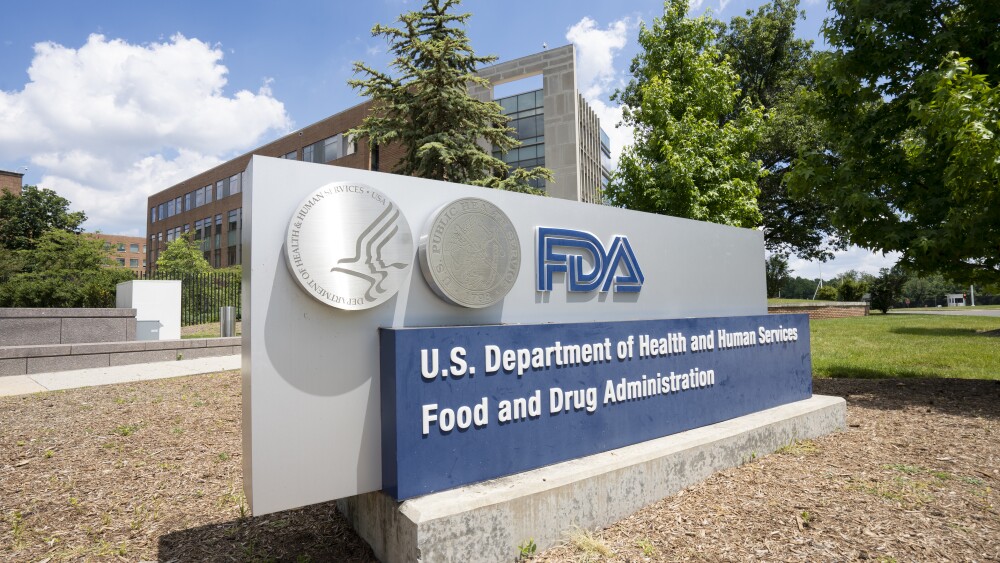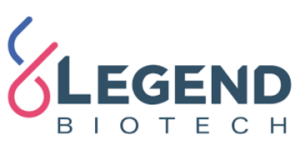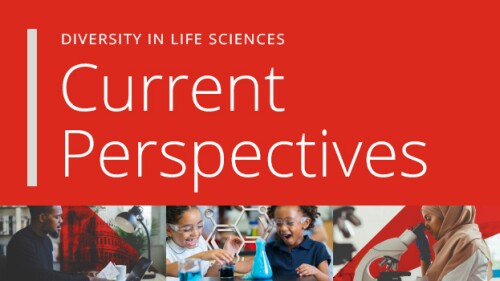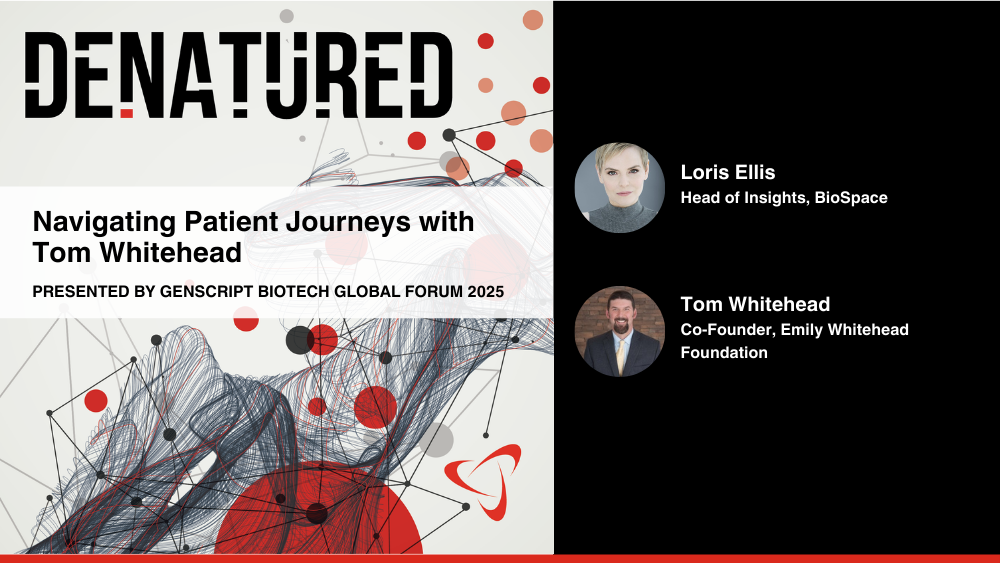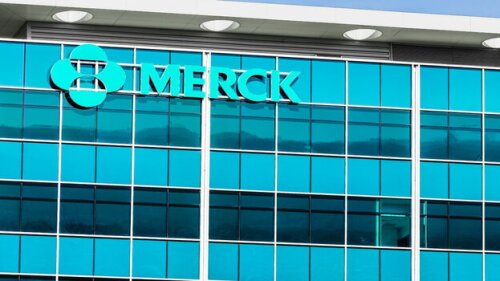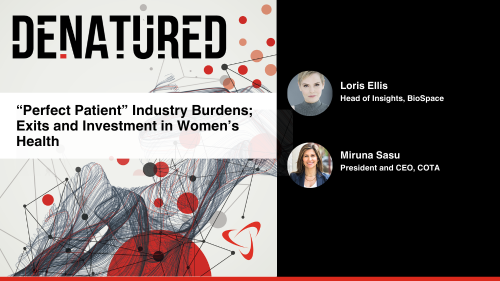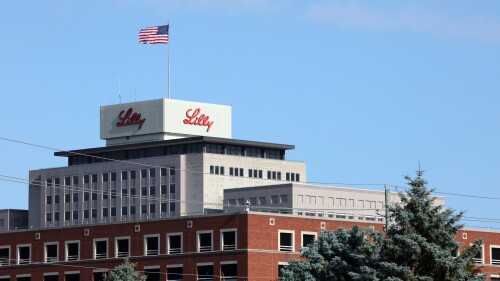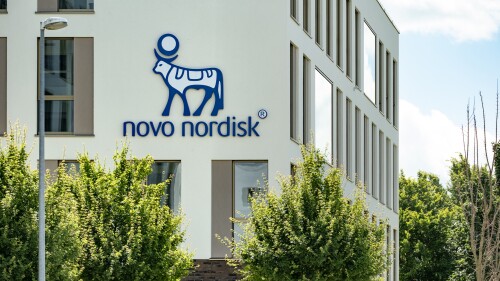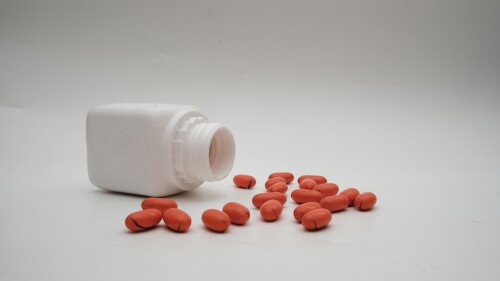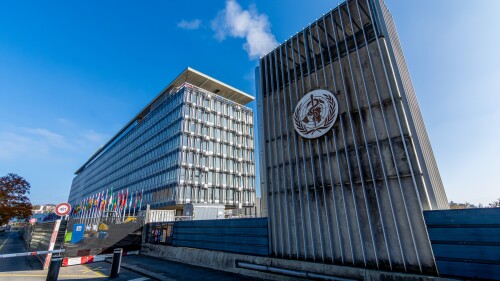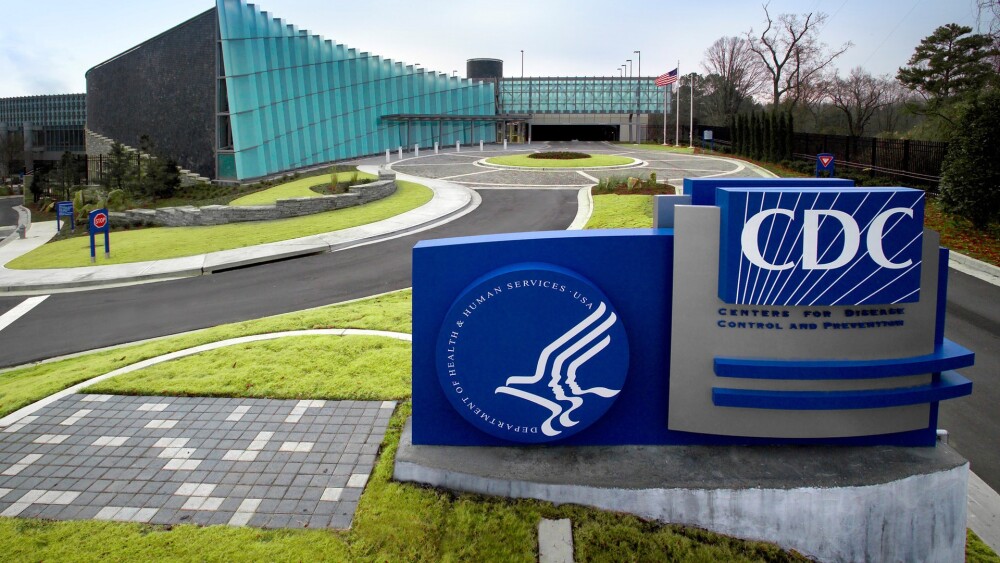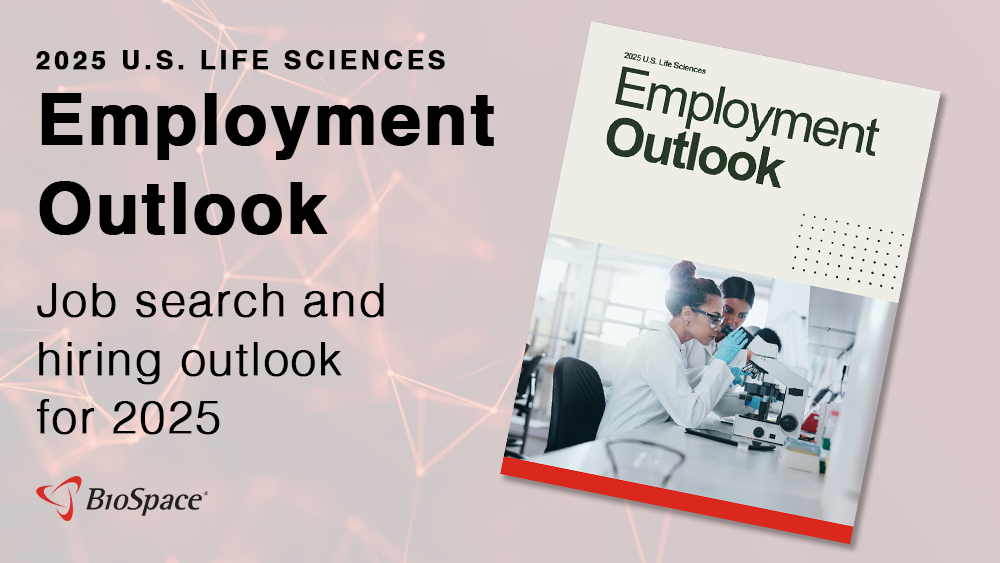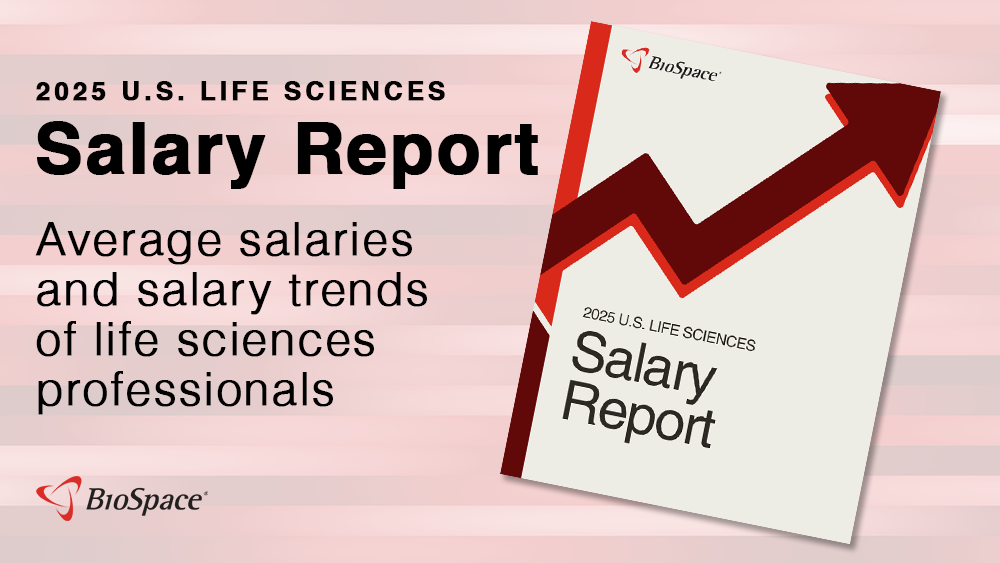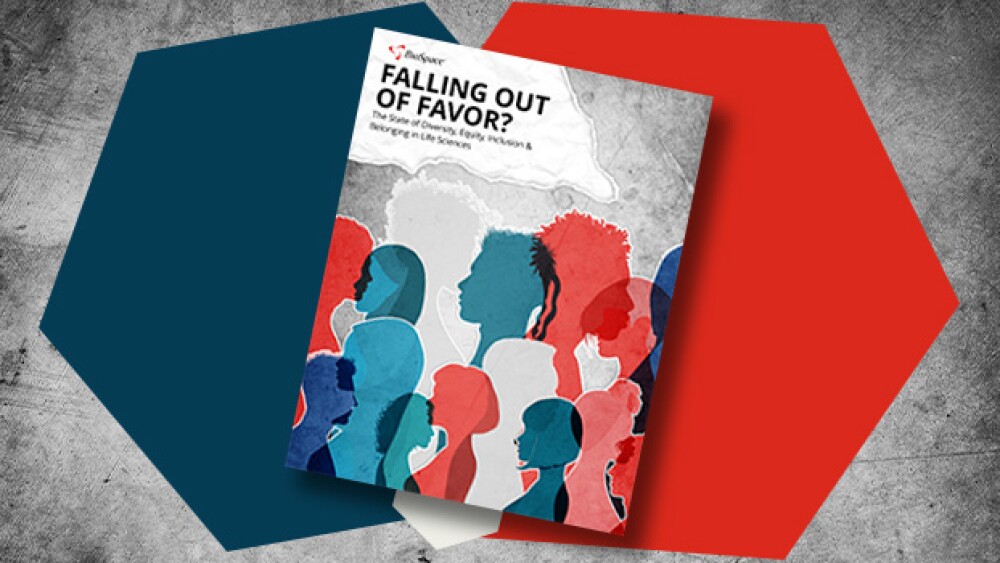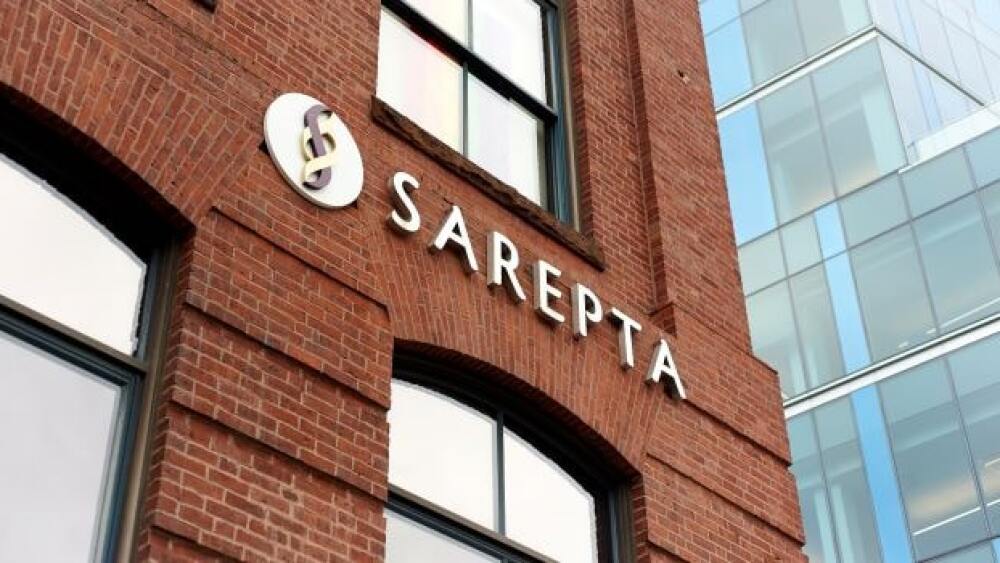The appointment of Richard Pazdur, currently director of the FDA’s Oncology Center of Excellence, comes less than a week after he reportedly declined the post, and just nine days after his predecessor’s controversial exit.
Data presented at this year’s American Heart Association Scientific Sessions in New Orleans underline rapid advancements in the cardiovascular field.
The mid-stage failure was unexpected to analysts at BMO Capital Markets, who viewed ‘770 as mostly derisked given its similar mechanism of action to Johnson & Johnson’s Spravato.
Cogent Biosciences expects to file a new drug application for bezuclastinib in gastrointestinal stromal tumors early next year after what Leerink said was “the first positive trial in this disease in over a decade.”
Kezar Life Sciences suffered multiple clinical holds and four patient deaths in a trial testing zetomipzomib for lupus—a program that has since been canned. The company is still pursuing development in autoimmune hepatitis, but recent FDA communications could delay its timeline.
The White House may have struck a deal with Eli Lilly and Novo Nordisk last week to lower the costs of their weight loss drugs for patients, but knockoff versions of Zepbound and Wegovy still permeate the obesity market.
FEATURED STORIES
While a substantial portion of pipeline assets are externally sourced, many Big Pharmas are tapping into incubators and venture funds to uncover cutting-edge scientific trends, determine their future focus points and even carve out a niche in an emerging geographical hotspot.
From innovation in manufacturing to more-flexible regulation and better communication with payers, much needs to happen to make CGTs commercially viable. But it is possible, experts agreed at a recent panel.
The primary focus in scaling up production should first be the adoption of lean manufacturing principles used in virtually every other industry.
After decades of limited progress—owing to the difficulty of treating the disease and resultant market risk—glioblastoma research is entering a new phase spurred by smarter trials, targeted funding and renewed interest from companies like Merck and Jazz Pharmaceuticals.
Sarepta and Capricor learned of key regulatory decisions from the media and investors, and Duchenne muscular dystrophy families have turned to the news for answers. Meanwhile, the FDA insists it remains committed to notifying companies of any regulatory action before sharing information with the media or public.
Against steep odds and well-established paradigms, these four companies have successfully been commercializing their products on their own.
LATEST PODCASTS
The FDA is mired in uncertainty with some staffers losing their jobs over the weekend and more potentially to come, vaccines and psychedelic therapies could be facing very different futures under newly confirmed HHS Secretary Robert F. Kennedy, Jr., Moderna continues its downward revenue slide and Merck, Regeneron, BMS and more face strong patent headwinds.
In the first podcast in a special series focused on BioSpace’s NextGen Class of 2025, Senior Editor Annalee Armstrong speaks with Dannielle Appelhans, CEO of COUR.
In this episode, presented by the Genscript Biotech Global Forum 2025, BioSpace’s Head of Insights Lori Ellis and Tom Whitehead continue to discuss the patient and caregiver experience, where Tom gives his insights to the future of CGTs.
Job Trends
Merck (NYSE: MRK), known as MSD outside of the United States and Canada, announced today that the U.S. Food and Drug Administration (FDA) has approved CAPVAXIVE™
Subscribe to GenePool
Subscribe to BioSpace’s flagship publication including top headlines, special editions and life sciences’ most important breaking news
SPECIAL EDITIONS
In this deep dive, BioSpace investigates China’s rise as a biotech powerhouse.
In this deep dive, BioSpace explores the next big thing in obesity.
BioSpace did a deep dive into biopharma female executives who navigated difficult markets to lead their companies to high-value exits.
DEALS
-
Merck has not disclosed which of its peptide therapies it plans to develop oral formulations for.
-
The French pharma is getting Black Diamond’s de-prioritized molecule for non-small cell lung cancers with specific mutations whose development had been paused to save money.
-
Roche’s up to $1 billion investment will provide access to Oxford BioTherapeutics’ antibody-drug conjugate platform for undisclosed cancer targets.
-
In this episode of Denatured, BioSpace’s Head of Insights Lori Ellis and Miruna Sasu, CEO of COTA, discuss the challenges of inclusion and exclusion criteria of clinical trial patients, and reflect on current investment approaches around women’s health.
-
Roche and Zealand plan to study petrelintide as a monotherapy and in combination with CT-388, a dual agonist of the GLP-1 and GIP receptors that Roche picked up in its recent acquisition of Carmot Therapeutics.
WEIGHT LOSS
-
Following a similar decision in case the trade group Outsourcing Facilities Association brought against FDA over its decision to declare the end of the shortage of Novo Nordisk’s semaglutide, Judge Mark Pittman agreed that Eli Lilly’s tirzepatide is in sufficient supply, meaning compounding pharmacies can no longer sell the lucrative weight loss drugs.
-
The FDA in February formally declared the end of the semaglutide shortage, which Novo Nordisk expects will help improve the market position of Wegovy. But Eli Lilly’s Zepbound is quickly gaining ground, with sales just $300 million behind Wegovy in Q1.
-
A new executive order aims to smooth the path for getting U.S. manufacturing facilities up and running; HHS says it will require placebo-controlled trials for all vaccine approvals; tariff threats hit BioNTech; Novo Nordisk’s FDA application for an oral version of Wegovy is accepted; and more.
-
The FDA accepted Novo Nordisk’s NDA for an oral formulation of Wegovy. The agency is expected to release its verdict on the drug in the fourth quarter of this year.
-
In an internal memo, the World Health Organization signaled its support for anti-obesity drugs like Wegovy and Zepbound, which the agency decided against listing in 2023, the last time the Essential Medicines list was updated.
POLICY
-
The high court’s order blocks a May decision by a California court that temporarily blocked the efforts of Health Secretary Robert F. Kennedy Jr. to drastically reduce the size of his agency’s workforce.
-
Leerink Partners called the announcement a ‘positive’ given the delayed timeframe and the uncertainty that the administration will implement tariffs at all.
-
The FDA will allow a new dosing schedule for Eli Lilly’s Alzheimer’s drug Kisunla that could lessen a known side effect of the monoclonal antibody drug class that has led to several deaths.
-
President Donald Trump’s One Big Beautiful Bill, signed into law last week, reintroduces broader exemptions for orphan drugs from the IRA’s drug price negotiation program—a move welcomed by the biopharma industry. The new tax law also cuts Medicaid funding, posing a minimal risk to pharma’s bottomlines and potentially jeopardizing hospitals’ 340B status. It does not, however, include new rules for pharmacy benefit managers that had been in an earlier draft.
-
Societies, including the American Academy of Pediatrics, allege that Kennedy’s directive to remove COVID-19 from vaccination guidelines for healthy pregnant women and healthy children puts these vulnerable groups at risk of serious illness.
New York City employers who use Artificial Intelligence (AI) tools in hiring will soon be subject to new regulations requiring them to notify candidates when using the technology.
Now more than ever, there is ample opportunity for life science candidates with only a bachelor’s degree. Still, there are certain things these candidates should know to ensure their success.
Computer programming jobs in biopharma are on the rise, but candidates must have a specific skill set. To help, here are the best programming languages for those working in the life sciences.
Discover the benefits and challenges of relocating to a biopharma hot spot and find out the most important factors to consider when making your decision.
Q1 is the time when life science professionals are ramping up their job search efforts. If this applies to you, here are some tips to help you get a head start and prepare for your Q1 job search.
Teaming up with a recruiter can be a smart move in a tight job market or for job seekers looking for a specialized role. To help you in your job search, we’ve outlined how to get the best out of recruiters.
HOTBEDS
REPORTS
In this Employment Outlook report, BioSpace explores current workforce sentiment, job activity trends and the prospective job and hiring outlook for 2025, particularly as it compares to the previous year.
BioSpace’s third report on diversity, equity, inclusion and belonging in life sciences examines dramatic shifts in attitude around diversity initiatives.
CANCER
-
Patritumab deruxtecan was unable to significantly improve overall survival in patients with locally advanced or metastatic non-small cell lung cancer with EGFR mutations.
-
iTeos expects to absorb nearly $25 million in one-time costs for severance and termination payments. The biotech had 173 full-time employees at the end of 2024.
-
Beginning this week in Chicago, the American Association for Cancer Research’s annual conference will feature presentations that could have far-reaching implications for breast and blood cancers and more.
-
Analysts were effusive about Merus’ new HNSCC data, writing that petosemtamab could “become the standard of care” in the first-line setting for this indication.
-
The FDA’s independent advisors found Pfizer’s data lacked the precision needed to establish the efficacy of Talzenna in patients with prostate cancer who do not carry HRR mutations.
NEUROSCIENCE
-
The deal helps revitalize the TREM2 target after the high-profile failure of AbbVie and Alector’s candidate last year.
-
After a tense exchange, Senator Patty Murray (D-WA) told Kennedy that by implementing sweeping cuts to the HHS, he is “enacting his budget,” which “Congress has not passed.”
-
Analysts at BMO Capital Markets said in a weekend note that a non-invasive blood test could help boost uptake of Alzheimer’s disease therapies.
-
The FDA also changed its tune and is now planning to convene an advisory committee to discuss Biohaven’s application.
-
Azafaros will use the Series B haul to push lead asset nizubaglustat into late-stage studies for Niemann-Pick disease Type C and GM1/GM2 gangliosidoses later this year.
CELL AND GENE THERAPY
-
One day after the European Medicines Agency requested that three clinical trials of Elevidys be placed on hold after the death of a U.S. teenager, a data monitoring committee concluded that they should continue unchanged.
-
Sangamo, which has been having cash problems, will receive $18 million upfront in licensing fees for its AAV capsid that in preclinical studies has shown the ability to cross the blood-brain barrier.
-
Already reeling from years of market chaos, the announced departure of CBER chief Peter Marks sent a ripple across biopharma markets.
-
Cell therapy and oncology–focused Carisma Therapeutics started layoffs late last year. Now the company plans to wind down fully.
-
The layoffs will take place throughout 2025 and will mostly affect Tenaya’s research and manufacturing operations. The company is continuing to test its hypertrophic cardiomyopathy gene therapy.

